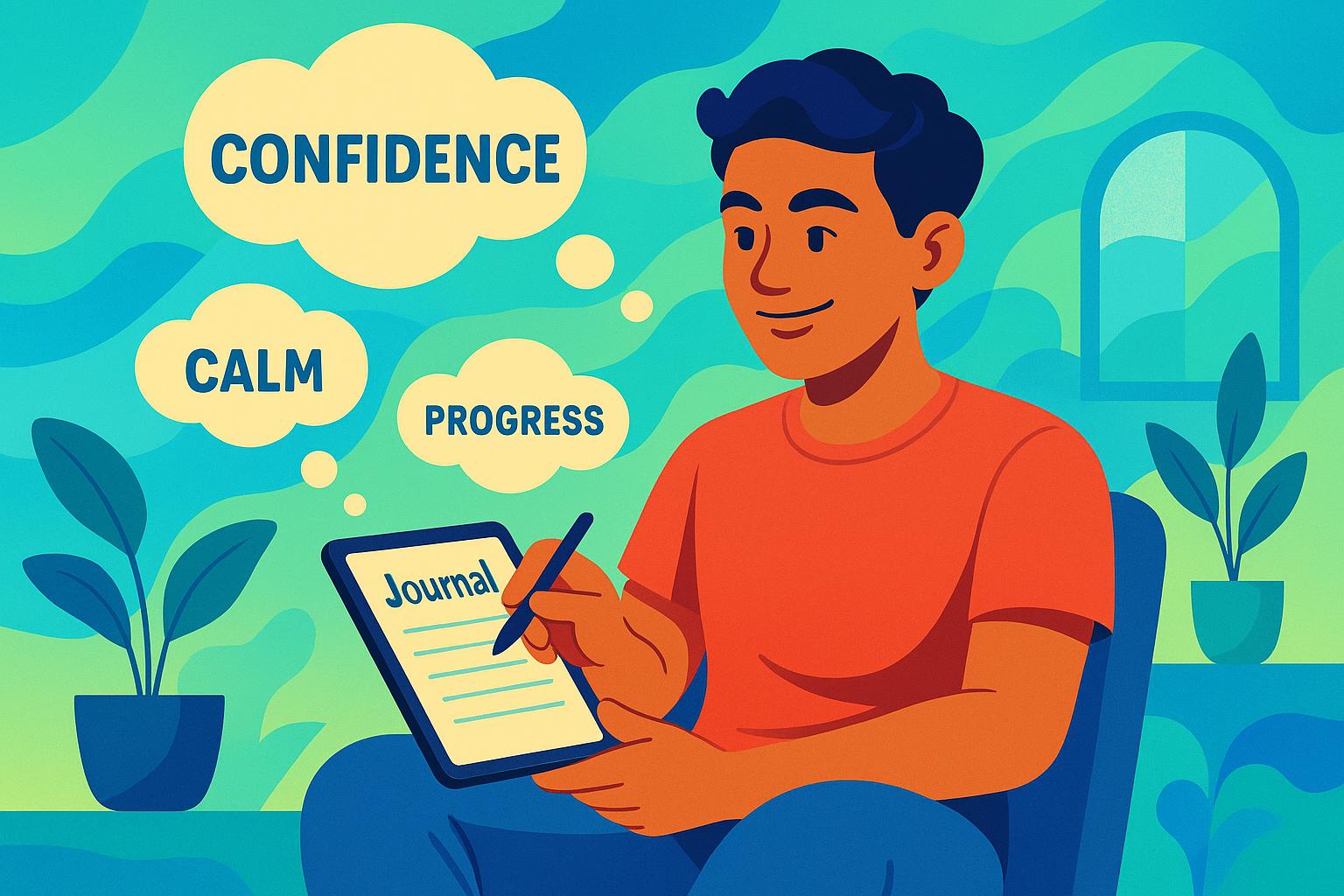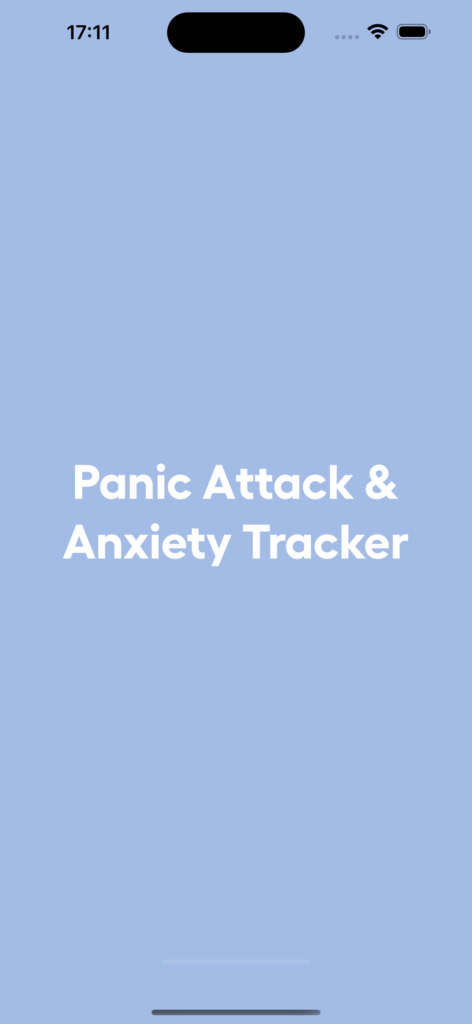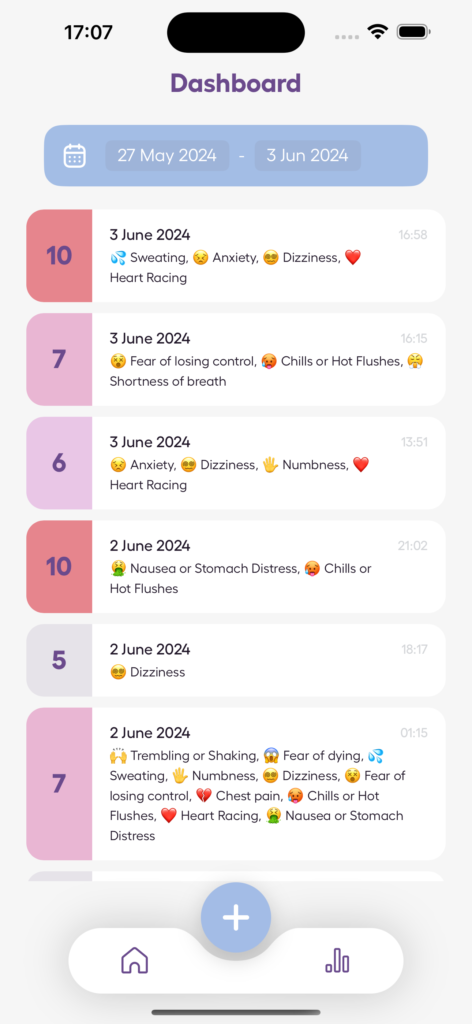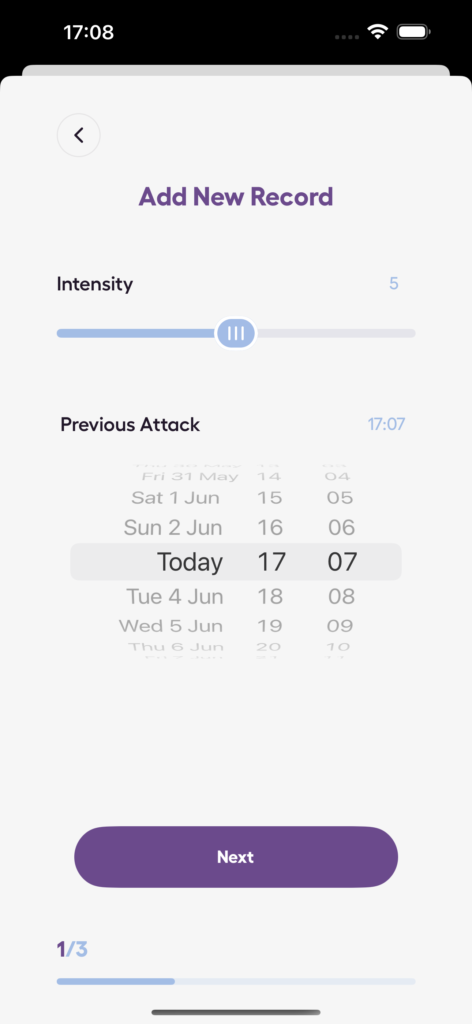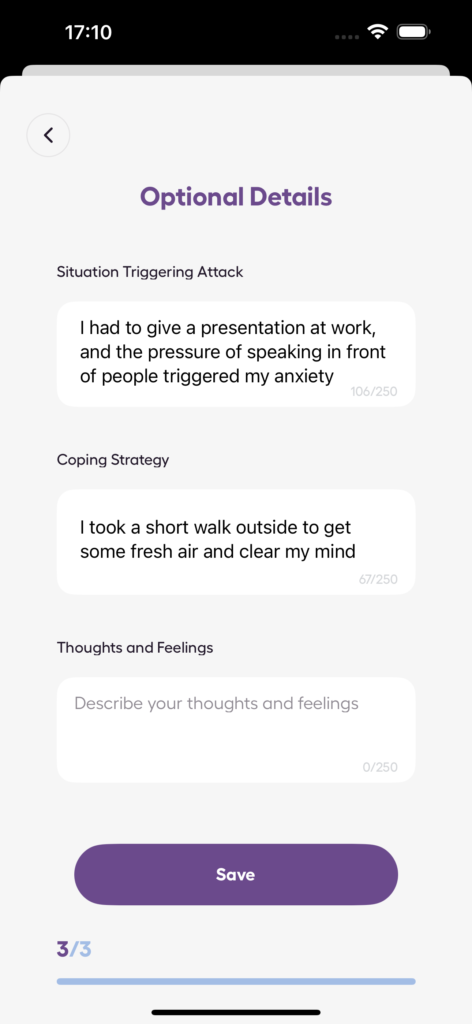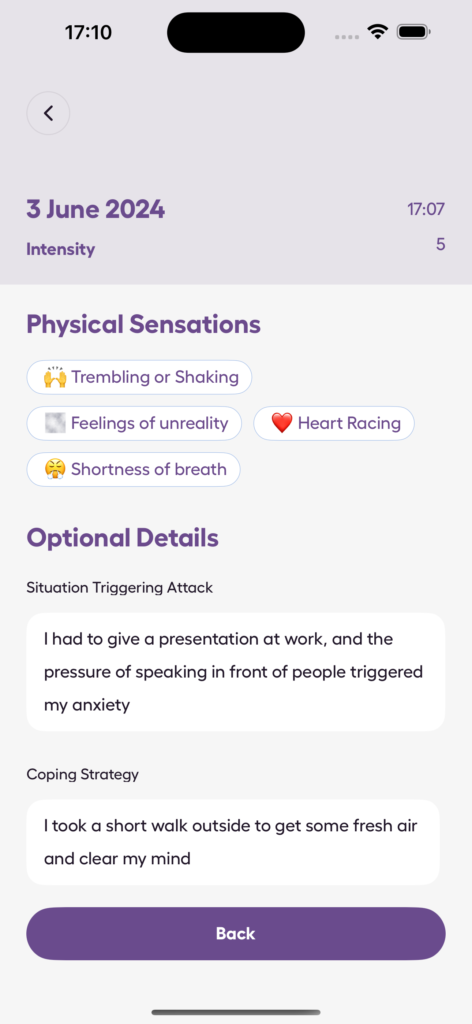Cognitive Behavioral Therapy (CBT) is a proven method for managing social anxiety, which affects about 7% of adults in the U.S. It focuses on addressing negative thoughts and avoidance behaviors that fuel anxiety. Here are three key CBT techniques that can help:
- Cognitive Restructuring: Identifies and challenges negative thoughts like fear of embarrassment or rejection. Tools like thought records help replace these with balanced perspectives.
- Behavioral Experiments: Gradual exposure to feared social situations – like speaking in meetings or joining group activities – builds confidence and reduces avoidance.
- Anxiety Journal App: A digital tool for tracking anxiety triggers, monitoring progress, and practicing CBT techniques like thought logging and breathing exercises.
Each method offers different ways to tackle social anxiety. Cognitive restructuring focuses on mindset, behavioral experiments address avoidance, and the Anxiety Journal app supports self-monitoring. Combining these approaches can lead to meaningful progress over time.
CBT Therapies for Social Anxiety Disorder: Part 1 | Mental Health Professional Webinar
1. Cognitive Restructuring
Cognitive restructuring is a core technique in CBT (Cognitive Behavioral Therapy) for managing social anxiety. It focuses on identifying those negative thoughts that feed your anxiety, questioning their validity, and replacing them with more balanced, constructive perspectives. By challenging these automatic thoughts, you can loosen their grip on your emotions and behaviors, interrupting the cycle of negativity they often create.
Use Cases
This method is particularly helpful when fears of embarrassment or rejection prevent you from engaging in activities like work meetings, social gatherings, or classroom discussions. For example, it tackles thought patterns such as mind-reading – assuming you know what others are thinking – and catastrophizing, where you imagine the worst-case scenario. Someone who believes, "I always mess up presentations", can learn to see this as an overgeneralization rather than an unchangeable truth.
Effectiveness
Studies show that cognitive restructuring works for 60–80% of people dealing with social anxiety disorder, especially when paired with other CBT techniques. Regularly using tools like thought records to challenge negative beliefs has been linked to reduced avoidance behaviors and greater confidence in social settings. That said, noticeable changes often require several weeks of consistent effort. For those with more generalized social fears or trauma-related anxiety, combining this technique with other therapeutic strategies tends to yield better outcomes. Many of these approaches are supported by digital tools that make practicing easier and tracking progress more manageable.
Accessibility
Cognitive restructuring is widely available across the U.S. Licensed CBT therapists and telehealth platforms provide professional guidance, while self-help resources like CBT workbooks and online materials offer structured ways to learn and practice independently. Apps, such as the Anxiety Journal, can also help by letting you log anxiety-inducing situations, examine your thoughts, and track your progress over time.
Though it may initially feel challenging to identify automatic thoughts without help, most people can become skilled at applying cognitive restructuring with practice and the right support tools. Over time, this technique can empower you to approach social situations with greater ease and confidence.
2. Behavioral Experiments (Exposure)
While cognitive restructuring focuses on rethinking negative thoughts, behavioral experiments take it one step further by testing those thoughts in real-life situations. These exercises involve directly facing anxiety triggers in a planned and controlled way, often revealing that social situations are far less intimidating than they seem.
The process typically starts with creating a fear and avoidance hierarchy – a ranked list of social situations, from mildly uncomfortable to highly anxiety-inducing. Gradually working through this hierarchy helps build real-world evidence to counteract worst-case fears. This structured approach lays the groundwork for practical, hands-on progress.
Use Cases
Behavioral experiments are particularly effective for individuals who tend to avoid anxiety-inducing situations. For instance, someone afraid of public speaking might begin with a small step, like contributing a single comment in a small meeting, and then work up to delivering a formal presentation.
Take Sara, a college freshman, or Steve, a working professional – both started with small, manageable social tasks and gradually took on bigger challenges. Another example is rejection therapy, which involves intentionally seeking situations where rejection might occur, like asking for a discount at a coffee shop. This approach helps individuals realize that rejection, while uncomfortable, is something they can handle.
Other applications include encouraging students to participate more in class or helping individuals initiate conversations and join group activities. Even young children can benefit. For example, Abby, a 7-year-old, overcame her fear of reading aloud by taking small steps toward engaging with classmates.
Effectiveness
Studies consistently show that exposure-based CBT is highly effective in reducing social anxiety symptoms, with results often ranging from moderate to large improvements. This approach is widely recognized as a leading treatment for social anxiety disorder, backed by strong scientific evidence.
Behavioral experiments work by giving individuals firsthand proof that challenges irrational fears. Facing feared situations regularly helps the brain adjust its anxiety response, reducing avoidance behaviors and building confidence in social settings. When paired with tools like cognitive restructuring and mindfulness, these experiments become even more impactful.
Accessibility
Behavioral experiments are flexible and can be tailored to various settings across the United States. Whether through individual therapy, group sessions, or self-guided formats, CBT for social anxiety is widely available. Telehealth services have also made these approaches more accessible than ever. Group-based exposure therapy, in particular, offers a supportive environment where participants can practice social skills with others facing similar challenges.
For those who prefer a self-guided route, there are online workbooks and apps designed to help plan and track exposure exercises independently. Tools like the Anxiety Journal app allow users to monitor their anxiety levels before and after exposure exercises, keeping detailed records of their progress.
Recording activities, such as a speech, often reveals that performance is better than expected. Starting with smaller, achievable challenges and leveraging available resources can help ensure consistency and success in practicing exposure exercises.
sbb-itb-b1dedcc
3. Anxiety Journal App

The Anxiety Journal app combines digital tools with CBT techniques to help manage social anxiety. Acting as both a panic attack and anxiety tracker, it allows users to log episodes, monitor stress levels, and maintain detailed records that align with CBT practices.
With instant logging capabilities, the app captures symptoms and triggers in real time, ensuring thoughts and feelings are documented while still fresh. It also offers guided breathing exercises for immediate relief, making it a practical companion for managing anxiety.
Use Cases
The Anxiety Journal app fits seamlessly into a CBT framework, offering various practical applications. For instance, college students can track their anxiety during group projects by logging each interaction, rating their anxiety on a scale of 1–10, and noting associated thoughts. Over time, these records help identify patterns that assist in cognitive restructuring.
In workplace settings, professionals can use the app to monitor anxiety before and after meetings, presentations, or networking events. Smart filters allow users to organize entries by trigger, date, or symptom, making it easier to review and use the data for exposure therapy.
The app also provides guided breathing techniques, such as box breathing and the 4-4-4-4 method, which users can access on the spot when faced with social anxiety triggers. These exercises not only offer immediate relief but also complement long-term behavioral strategies, paving the way for steady progress in anxiety management.
Effectiveness
According to a 2023 APA survey, 46% of mental health app users reported improved self-awareness, while 38% noted better communication with their therapists. These findings highlight the value of digital tools like the Anxiety Journal app in supporting CBT.
The app’s AI-driven analysis and recommendations provide personalized insights, helping users pinpoint their unique social anxiety triggers without needing advanced analytical skills. Detailed reports with visual progress charts offer tangible evidence of improvement, aligning with CBT goals and making progress easy to track.
Additionally, users can take standardized tests like the GAD-7 directly within the app. These tests provide measurable data to track anxiety levels over time, especially during exposure therapy. By documenting progress through fear hierarchies, users gain a clearer picture of their achievements and areas for growth.
Accessibility
The Anxiety Journal app breaks down barriers to CBT participation with its intuitive design and broad availability. Boasting an average rating of 4.7/5 on the Apple App Store and 4.6/5 on Google Play as of October 2025, users frequently praise its ease of use and thoughtful interface.
Available for both iOS and Android, the app is tailored for American users, featuring US English spelling, standard MM/DD/YYYY date formats, and examples of anxiety triggers relevant to American workplaces and schools. It offers a free version, while premium features range from $4.99 to $9.99 per month, making it an affordable alternative to traditional therapy.
Privacy is a priority, with secure data storage and options to export or delete personal information at any time, addressing concerns about digital mental health data. For individuals between therapy sessions or those practicing self-guided CBT, the app provides structure and consistency. Users can also share detailed reports with their therapists, ensuring that their documented experiences enhance professional treatment plans.
Benefits and Drawbacks
When it comes to managing social anxiety, each CBT technique comes with its own set of strengths and challenges. Choosing the right approach often depends on individual preferences, motivation, and the specific nature of one’s anxiety. Let’s break down the pros and cons of these methods to better understand their impact.
Cognitive restructuring focuses on helping individuals recognize and challenge negative thought patterns. By shifting to more balanced thinking, this technique can significantly reduce anxiety symptoms. Once someone masters the basics, it can even be practiced independently. However, this method requires consistent effort and self-reflection, which can be tough for individuals dealing with deeply rooted beliefs.
On the other hand, behavioral experiments encourage people to face feared social situations, showing them that these scenarios are often far less threatening than they imagine. This can be especially helpful for those whose anxiety leads to avoidance behaviors, as it builds confidence through gradual exposure. But there’s a catch – exposure can initially heighten anxiety and discomfort. Without proper preparation and guidance, it might even reinforce negative thoughts rather than diminish them.
The Anxiety Journal app offers a modern twist, blending traditional CBT principles with easy, on-the-go self-management. Its biggest advantage is convenience. By enabling users to track patterns and triggers in real time, it supports self-monitoring and CBT exercises. However, its effectiveness hinges on consistent use, and it’s not a replacement for professional therapy, especially for those needing more intensive help.
| Technique/Tool | Effectiveness | Ease of Use | Accessibility | Main Drawbacks |
|---|---|---|---|---|
| Cognitive Restructuring | High (proven effective for addressing negative thoughts) | Moderate (requires regular practice) | High (can be done independently) | May be difficult for deeply ingrained beliefs |
| Behavioral Experiments | High (reduces avoidance and builds confidence) | Moderate (initial discomfort) | Moderate (often needs guidance) | Can increase anxiety at first; risk of reinforcing negative beliefs if mismanaged |
| Anxiety Journal App | Moderate to High (supports self-management) | High (intuitive and user-friendly) | Very High (accessible anytime) | Relies on user engagement; not a substitute for therapy |
Each method serves a different purpose, and the best choice often depends on the individual. Cognitive restructuring works well for tackling negative thought patterns, while behavioral experiments are ideal for reducing avoidance behaviors. The Anxiety Journal app complements both approaches, offering structure and real-time insights.
For some, the analytical nature of cognitive restructuring may be more appealing, while others might prefer the proactive approach of behavioral experiments. Meanwhile, the app is perfect for those who enjoy tracking progress and gaining insights from data. However, it might not resonate as much with people who value personal interaction over digital tools. Ultimately, the right mix of these techniques can provide a tailored approach to overcoming social anxiety.
Conclusion
Effectively managing social anxiety through CBT requires a personalized approach. The best strategies depend on your specific symptoms, daily routine, and individual preferences. One key technique, cognitive restructuring, helps to shift those negative, automatic thoughts into more balanced and realistic ones.
In addition to reframing your thoughts, practical exposure is essential for building resilience. Behavioral experiments work particularly well if your anxiety often leads to avoidance. For example, if you tend to skip social gatherings, avoid speaking up in meetings, or decline invitations due to fear, gradually exposing yourself to these situations can help you build confidence – even if it feels uncomfortable at first.
To complement these techniques, tools like the Anxiety Journal app can offer valuable support. By tracking triggers, symptoms, and coping strategies, the app provides insights that help you adapt and refine your approach. This data-driven perspective can make your CBT journey more structured and personalized.
When combined, cognitive restructuring, behavioral experiments, and digital tools create a well-rounded CBT strategy for tackling social anxiety. Studies consistently show that CBT remains the most effective treatment for social anxiety disorder, which affects about 7% of the U.S. population at any given time. Personalizing your approach is key – many people find that pairing thought-challenging techniques with exposure-based activities is especially impactful.
Start small and take manageable steps. Whether you prefer analytical methods like thought records or hands-on approaches like behavioral experiments, incorporating tools like anxiety tracking apps can help you stay consistent and track your progress over time. With patience and persistence, these methods can lead to meaningful change.
FAQs
What are some practical ways to use cognitive restructuring daily to manage social anxiety?
Cognitive restructuring is a core technique in Cognitive Behavioral Therapy (CBT) that helps you challenge unhelpful thoughts and replace them with more balanced, constructive ones. To incorporate this into your everyday life, begin by pinpointing situations that make you feel anxious – like social interactions or speaking in front of a group. Use a journal to jot down the negative thoughts that come up during these moments.
Once you’ve identified these thoughts, take a step back and evaluate them. Ask yourself questions like: Am I basing this thought on facts or assumptions? or Could there be a more realistic way to interpret this situation? From there, work on reframing these thoughts. For example, instead of focusing on potential embarrassment, shift your attention to your strengths or the positive outcomes of connecting with others. With regular practice, this approach can ease anxiety and help you feel more confident in social settings.
What are some simple ways to start behavioral experiments if exposure feels overwhelming?
Starting behavioral experiments might seem overwhelming at first, but breaking them down into smaller, easier steps can make the process much smoother. Start by pinpointing a specific situation that heightens your social anxiety, then set a simple, achievable goal tied to it. For instance, if speaking up in meetings feels daunting, you could aim to make one brief comment or ask a straightforward question during a smaller group discussion.
Preparation can also make a big difference. Take some time to practice what you want to say, picture a positive outcome, and remind yourself that the focus is on making progress, not achieving perfection. Afterward, take a moment to reflect on the experience – what went well and what you learned. Over time, these small steps can help build your confidence and make those situations feel less intimidating.
How can the Anxiety Journal app support CBT techniques for managing social anxiety?
The Anxiety Journal app works hand-in-hand with CBT practices, offering a way for users to monitor and better understand their anxiety patterns. It lets individuals log details about panic attacks, anxiety episodes, and stress levels, including triggers, thoughts, and the coping strategies they used. This kind of detailed tracking can reveal recurring patterns and provide deeper insights into what drives their anxiety.
On top of that, the app uses AI to offer personalized strategies for managing social anxiety. It also features practical tools like guided breathing exercises and anxiety level assessments, designed to help ease symptoms and support mental well-being.
